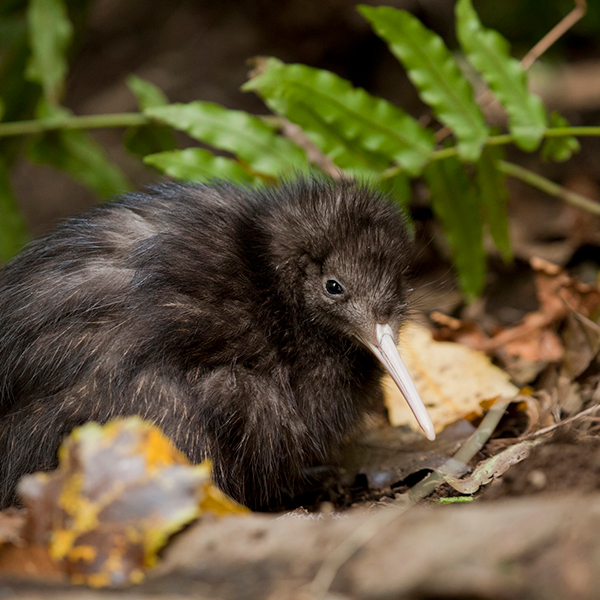Protecting the endangered Brown Kiwi

In New Zealand and around the world, our Animal Management technology and fencing is mostly used to keep big animals in. But in a small park situated in the Central North Island of New Zealand, a team of conservation volunteers are using Gallagher technology to keep small animals out. The small animals are predators, and they’re being kept out to protect a wild population of endangered North Island Brown Kiwi.
This aligns strongly with our company purpose - protect what matters most - and our brand value 'We are committed to a better tomorrow'.
In 2002, it was estimated that a remnant population of 200 eastern brown Kiwi remained in the Kaweka Ranges. Chick mortality due to predation by stoats, ferrets and dogs was so high, only one out of every 20 Kiwi made it to adulthood. Without strategic intervention, it was likely the Kaweka Kiwi would be extinct within 10 years.
A few years later, the Environment, Conservation & Outdoor Education Trust (ECOED) was formed to reverse the decline. Through the work of its passionate volunteers, ECOED set up the Kiwi crèche at Lake Opouahi, a pest-free area surrounded by a pest-proof fence.
Phil Kay has been a Kiwi Creche volunteer since its inception and was on hand when the original fence was erected over 20 years ago.
“Kiwis face dangers from a wide variety of predators. Ferrets, cats and dogs are the biggest threat to adult Kiwis. Stoats are the enemy of Kiwi chicks. For the sake of New Zealand’s biodiversity, we need to give these Kiwis a fighting chance to expand their population. We do that by bringing in Kiwi chicks from the wild and placing them within the boundaries of the predator-proof fence. Inside, they can grow in relative safety and our volunteers regularly monitor their progress.”
Once the Kiwi chicks reach a minimum weight, they are deemed large enough to fend off most predators. Upon reaching that milestone, they are then released back into the wild.
The predator-proof fence employs a variety of sophisticated meshes. This includes an underground mesh to prevent animals from digging their way in and a clever top cap that stops predators from climbing over. To help protect the Kaweka Kiwis, there is also a multi-wired current - with wires set at two heights and running the length of the fence, two levels of protection have been added.
Phil explains: “The Kiwi crèche is surrounded by farmland and cattle often graze on the perimeter of the fence line. These animals can weigh over 500 kilograms, and it doesn’t take much for them break a post or kick a hole in the mesh. A breach like that could take us weeks to find, and by that stage, all manner of predators could have entered the crèche.
“But thankfully, cattle damage isn’t an issue – Gallagher’s electrical system deters the animals and keeps them at bay. And there’s another upside to having a live current: it keeps bigger pests like possums from climbing up the fence. These extra elements all play a part in keeping the Kiwi safe.”
As comprehensive as the Kiwi crèche system is, incursions occasionally happen. To minimise this risk, regular maintenance is carried out by a small army of volunteers. Collectively, this generous team donates more than 4,500 hours annually. Our very own Georgia Burgess is among them.
Georgia is Gallagher’s Territory Manager in the Hawke’s Bay, and though she wasn’t around when the outrigger fence was installed, she gladly gives her time to help maintain the system.
“The Kiwi crèche is a marvellous project and I love being involved. Whether it’s periodically checking the perimeter or making recommendations to Phil and his team, I’m glad to play a small part.
“So far, more than 310 kiwi chicks have been raised and returned to the Kaweka Forest Park, which is exciting. If things keep progressing, the numbers of North Island Brown Kiwi will be back up to a sustainable level.”
Interested in joining our Animal Management team? Meaningful work exists at Gallagher. Explore our current vacancies here.